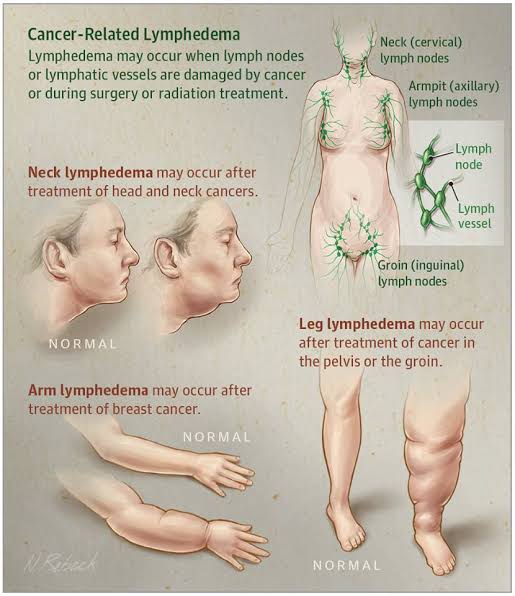What is lymphoedema
What is Lymphoedema?
Lymphoedema is swelling caused by a build up of lymph fluid in the body tissues especially in the layer of fat under the skin.
Normally lymph flows through lymph vessels but if the lymphatic system is damaged or inadequate it cannot handle the usual amount of lymph and fluid builds up in the tissues.
Lymphoedema results in swelling of the limbs and may involve the trunk or head as well. Lymphoedema causes swelling in the affected area, discomfort, loss of movement and calls for practical and psychological adjustment.
Prevention is the best approach. Visit https://m.facebook.com/377788129634122
How will I know if I am getting lymphoedema?
If you have had lymph node surgery or radiation, watch out for changes in sensation, feelings of tightness, heaviness or swelling on the side the lymph nodes have been removed. You may notice a change in skin colour or the feel of the skin. Rings, bracelets, clothing or shoes may feel tighter. Speak to your doctor.
Primary Lymphoedema
Lymphoedema can be either ‘primary’ or ‘secondary’. Primary lymphoedema refers to lymphoedema that arises spontaneously because of a poorly formed lymphatic system and affects about 1 in 6000 people. Primary lymphodema:
can arise at any time but commonly at birth or at puberty or at 30-40 years or later
makes up 5-10% of all lymphoedemas
Secondary Lymphoedema
Secondary lymphoedema may occur in some people as a result of trauma, surgery and radiation to the lymph nodes, or a parasitic worm carried in mosquitoes (filariasis).
sentinel node biopsy and less radical surgery is reducing the numbers of people with lymphoedema
lymphoedema may arise 3-6 months after surgery or may appear years later.
Stages of Lymphoedema
Stage one
Acute phase - swelling lessens overnight. The skin is soft and when pushed in leaves a dent that fills again in a few seconds. Swelling is reduced by elevation and the limb /area is often normal or almost normal looking in the morning. The area swells up again during the day. If this type of lymphoedema occurs in the first 12-18 months after surgery, due to overuse, it can often be treated and managed so that symptoms remain stable with good self care.
Stage two
The skin thickens, hardens and becomes less elastic. There is less skin pitting. The limb / area becomes more sensitive to infection. By this time the condition is chronic, progressive and currently irreversible. With good self care and management the condition can stabilize at this level.
Stage three
Significant swelling and toughening of the skin is evident. Skin folds and deep crevices may occur. The limb / area may leak lymph fluid. Good early care can often prevent such problems.

